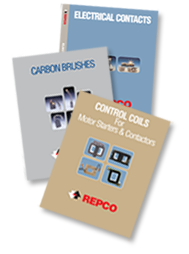
- Electrical Contacts
Electrical Contacts
- Carbon Brushes
Carbon Brushes : Brush Reference
- Control Coils
Control Coils
- Other Contactor Parts
- More
- Search
- Auxiliary Contacts
Auxiliary Contacts
- Shunts
Shunts
- Springs
Springs
- AC Contactors & Starters
AC Contactors & Starters
- DC Contactors
DC Contactors
- Drives
Drives
- Fuses
By: David Howard | G+
Repco and summer fun and amusements
As summer kicks off, it’s likely you’re planning a vacation. Whether on a day trip or weeklong stay, chances are you’ll encounter an amusement ride or two. From the tilt-a-whirl to the roller coaster, few of us think much about the mechanical engineering and physics involved in an amusement ride; nor the endless maintenance they require. We just buy the tickets and have some fun.
But keeping amusement rides running safely requires continual maintenance. Motors, hydraulics, control panels, and braking and safety systems must all be checked and maintained. The time and effort only escalates as the size and complexity of the ride increases.The mechanics of roller coasters
The king of amusements is usually the roller coaster. They’ve been growing higher, faster, and more adventurous over time. But underneath, most still include simple mechanical systems. Sure, some incorporate advanced electronics and electromagnetic propulsion - but most still rely on electrical motors and hydraulics to keep the fun moving.
The classic chain-drive coaster utilizes a motor-driven chain to pull the coaster out of the station and up the first hill, where gravity then takes over. The motor and chain are standard mechanical parts but each requires monitoring and maintenance.
Linear induction motors are also used to propel some coasters. The benefit of LIM-based coaters is the ability to provide speed boosts throughout the ride, and to reverse their direction - so the ride can be propelled both forwards and backwards. The downside of LIM coasters is that the motors themselves require higher voltage power, which can be problematic in high volume attractions.
Newer accelerator (a.k.a catapult) coasters use large compressed nitrogen accumulators to force hydraulic fluid past turbines, that in turn drives a winch that propels the car via the launch mechanism. The system generally resets in 45 seconds; ready to launch the next carload.
Of course, what’s going on behind the scenes for each type of coaster is far more complicated - though still fairly straightforward mechanically speaking. And electrical motor controls and motors play important roles. Whether in the launch house, chain motors, LIM power feeds, or hydraulic pumps, you’ll find electrical contacts and carbon brushes throughout the power systems, motors, and safety equipment.There are no comments. Be the first to comment.
Leave A Comment Now
International: 856-762-0172
Domestic: 800-822-9190
Literature Request Or Download
Click here to download or browse our Electrical Contact, Carbon Brush, or Control Coil catalogs online.

Repco
100 Sonwil Drive
Buffalo NY 14225Repco Quick Contact
We are excited to announce that REPCO has merged with USA Industrials.
For all inquiries, please contact us at service@usaindustrials.com or give us a call at 800-822-9190.
We appreciate your understanding and look forward to serving you better with our expanded capabilities.
- Carbon Brushes